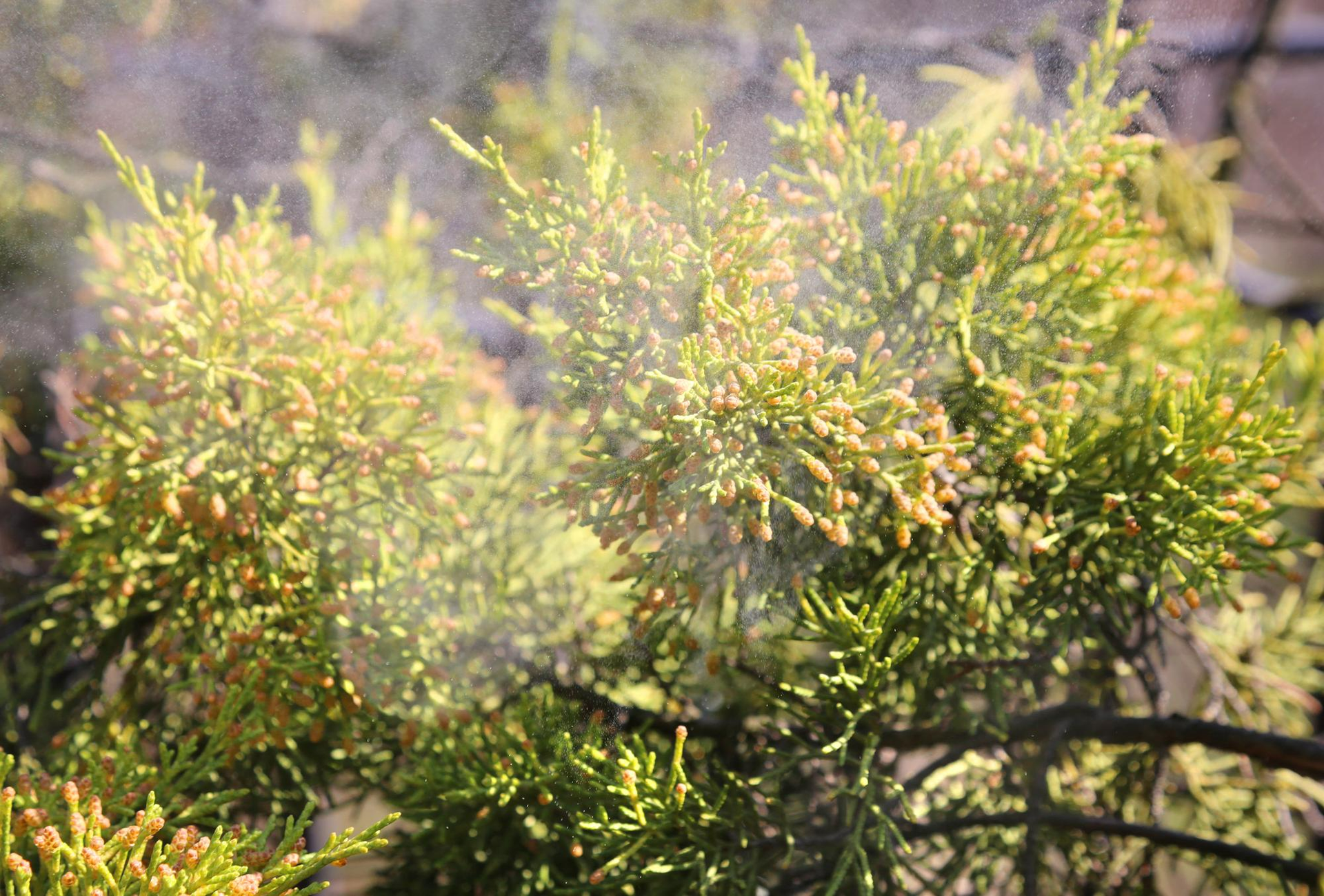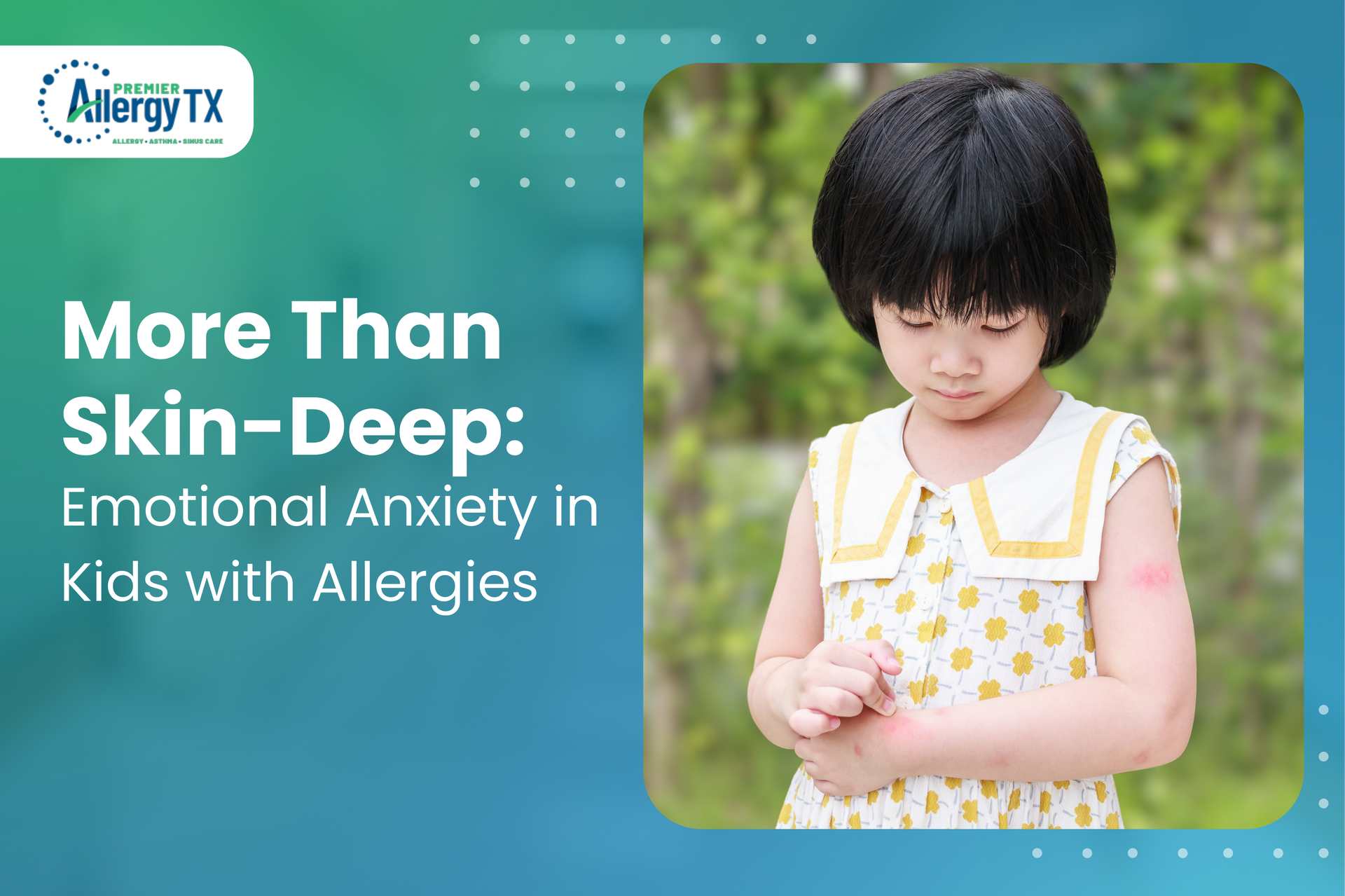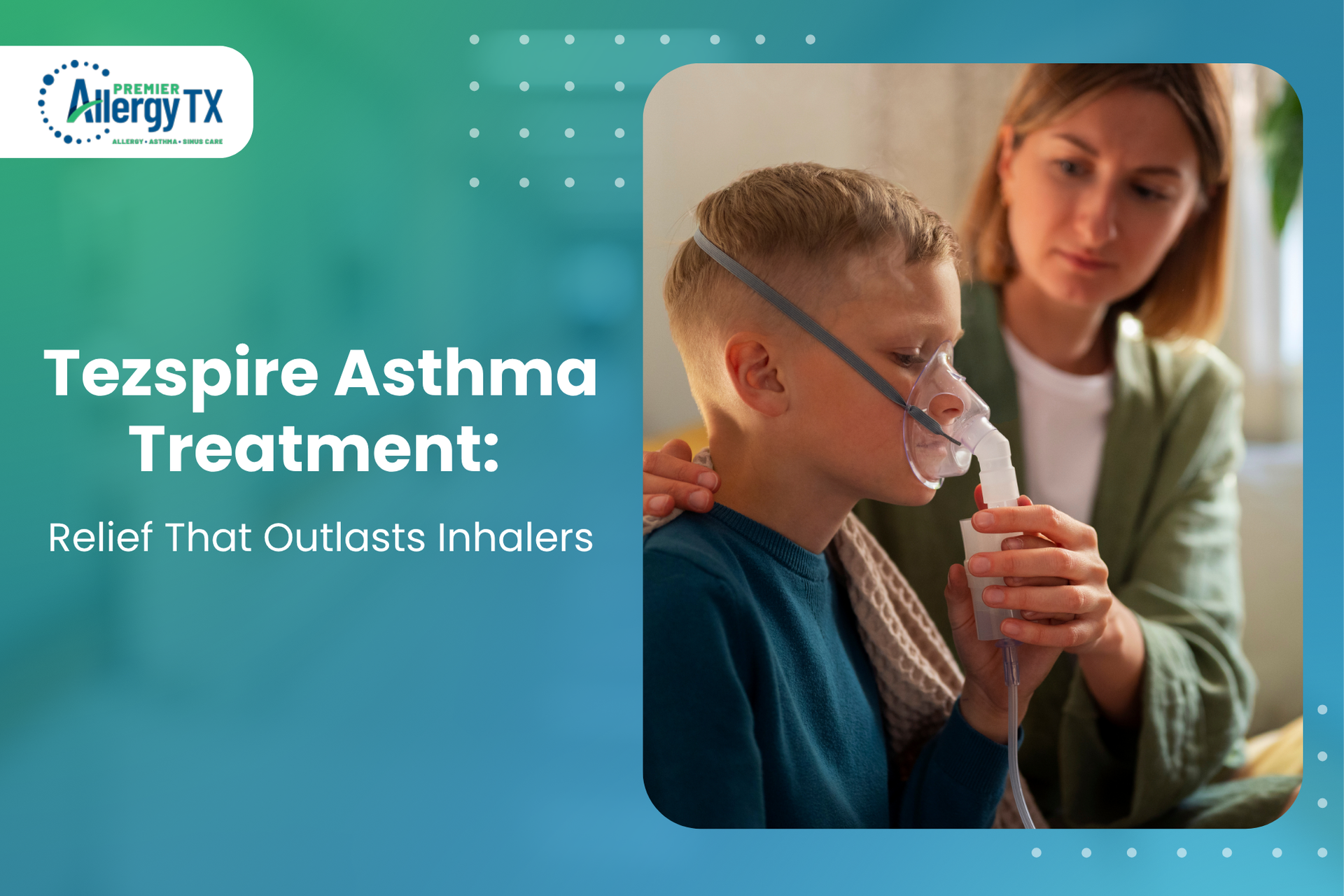As winter blankets San Antonio, many locals brace themselves for an unwelcome seasonal visitor:
cedar fever. If you’ve lived in Texas long enough, you might already be familiar with this notorious winter allergy triggered by mountain cedar pollen.
What makes cedar fever particularly notorious is its intensity. While typical seasonal allergies might leave you feeling a bit under the weather, cedar fever often lives up to its name, producing symptoms so severe that sufferers sometimes mistake them for the flu.
We get it—dealing with cedar fever isn’t fun. That’s why at Premier Allergy of Texas, we’re here to help you tackle it with treatments and strategies that bring real relief. So, if you’re dreading this season, don’t worry. With the right approach, you can get through cedar fever feeling a whole lot better.
Your Cedar-free Winter Starts Here
Understanding the Mountain Cedar Allergy Season
If this is the first you’ve heard of it, you might wonder what makes cedar fever so different from other allergies. Let’s break it down.
What Causes Cedar Fever?
Mountain cedar trees (Ashe Juniper) release billions of pollen grains into the air during their winter pollination period. These
microscopic particles trigger your immune system's response—not an actual infection. This is why medications that fight fever and infection won't help with cedar fever symptoms.
Key Symptoms to Watch For:
You will likely experience the following
cedar fever symptoms:
Fun Fact: Despite its name, cedar fever rarely involves an actual fever. Instead, the intense inflammation from your immune response can create fever-like feelings, such as body aches and a general sense of feeling “under the weather.”
Why Cedar Fever Hits So Hard: The Science Behind It
Why do mountain allergies seem more intense than your spring or fall allergies? The answer lies in both the unique characteristics of cedar pollen and our Texas weather patterns.
The Potency of Cedar Pollen
Mountain cedar trees don't just release pollen; they unleash it. A single mature tree can release
billions of pollen grains in one day. These particles are:
- Extremely small and lightweight.
- Easily carried by wind.
- Capable of traveling up to 200 miles.
- Particularly irritating to the immune system due to their protein structure.
Timing is Everything: The Winter Paradox
Unlike most seasonal allergies, cedar fever strikes during winter months
:
- Peak Season: December through February
- Highest Pollen Counts: Early morning hours, especially on sunny, windy days
- Why Winter? When other plants go dormant, mountain cedar begins its pollination process
The Texas Connection
Central Texas has earned the nickname "Allergy Capital of the World" for a good reason:
- The Hill Country's limestone-rich soil creates
perfect growing conditions for mountain cedar.
- Our region has one of the highest concentrations of Ashe junipers in the world.
- The local climate allows these trees to thrive and produce abundant pollen.
- Texas experiences shifting weather patterns, leading to unpredictable “pollen storms” exacerbating
seasonal allergy symptoms.
- Rain can help wash away pollen, but Central Texas can go through dry periods.
Understanding "Pollen Storms"
Those yellowish clouds you might see on winter mornings? That's what we call a pollen storm, and here's when they're most likely to occur:
- After a cold front: The drop in temperature triggers mass pollen release
- During dry, windy conditions: Perfect for pollen dispersal
- Following several dry days: Allows pollen to accumulate and release simultaneously
Practical Tips for Managing Cedar Fever Symptoms
Now that we know what makes Texas cedar fever so intense, let’s talk about what you can do to manage the symptoms and find some relief. Here is a simple checklist for you to follow.
Monitor and Plan Ahead
- Check local pollen forecasts daily (especially important during December-February)
- Plan outdoor activities for times when pollen counts are lower (typically afternoons and evenings)
- Sign up for local pollen alerts on your weather app
Create a Pollen-Free Home Environment
Keep the Outdoors Out:
- Remove shoes before entering your home
- Change clothes after being outside
- Shower before bed to wash off pollen
- Keep windows closed during peak cedar season
Home Maintenance:
- Use HEPA air purifiers in main living areas and bedrooms
- Change AC filters monthly during the cedar season
- Vacuum regularly with a HEPA-filtered vacuum
- Wash bedding weekly in hot water
Personal Protection Strategies
When Outdoors:
- Wear wraparound sunglasses to protect your eyes
- Use a high-quality face mask during high pollen days
- Consider wearing a hat to keep pollen out of your hair
Daily Habits:
- Rinse your sinuses with saline solution
- Use artificial tears to flush irritants from your eyes
- Stay well-hydrated to help thin mucus
- Consider using over-the-counter antihistamines (consult with your healthcare provider first)
Strengthen Your Defense
- Start allergy medications before peak season begins
- Keep your immune system strong with:
- Regular exercise (indoors during high pollen days)
- Adequate sleep
- A healthy diet rich in anti-inflammatory foods
- Stress management
Pro Tips from Our Experts
- Keep your car's AC on recirculate when driving
- Use "backup" medications during severe pollen days
- Create a "clean room" in your home (typically your bedroom) with extra air filtration
- Consider wearing a mask for outdoor exercise during peak season
Cedar fever can be intense, but you don't have to suffer through it. With the right combination of prevention and allergy treatment, you can enjoy a more comfortable Texas winter months.
Your Partner in Fighting Allergies
Living in Texas means embracing our unique climate, culture, and, yes, even our distinctive allergy seasons. The good news? You will always have Premier Allergy of Texas at your service.
Our approach is simple: we listen to your story, understand your symptoms, and create a plan that fits your life with our range of treatments and support from our
San Antonio allergists to help you feel better faster.
- Personalized Allergy Testing: Not sure if it’s cedar fever or other Texas allergens? Our in-depth testing can help you pinpoint exactly what’s triggering your symptoms so we can create a treatment plan that works for you.
- Immunotherapy Options: For those struggling with severe symptoms, we offer immunotherapy (allergy shots or sublingual drops) to help your body build tolerance to cedar pollen over time.
- Targeted Symptom Relief: We provide targeted treatments and recommendations to manage symptoms effectively, from antihistamines to nasal sprays, tailored to your needs.
Don’t let cedar fever control your life or keep you from enjoying everything our beautiful state has to offer. Take that first step toward better breathing today. Your future self will thank you.
Breathe Easier This Winter Season
















